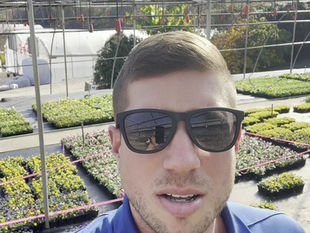

Why You Can’t Compact Saturated Clay Soil in Georgia: A Crucial Hardscaping Insight
1
130
0
If you’ve ever worked with Georgia clay, you already know it can be as stubborn as it is strong. But when that thick, red clay gets saturated with water, it becomes one of the worst materials to try and build on—especially when it comes to hardscaping projects like retaining walls, paver patios, and drainage systems.
Here’s why you can’t compact saturated clay soil and what that means for the integrity of your landscape construction.
The Nature of Georgia Clay
Georgia’s native clay soil is fine-textured and holds water extremely well. That may sound like a benefit for gardening, but it’s a serious red flag in hardscaping. Once it’s wet, this dense clay becomes plastic and slippery—far from the solid, stable base you need for load-bearing structures.
Why You Can’t Compact Saturated Clay
When clay is dry or slightly moist, it can be compacted to create a stable sub-base. But once it’s saturated:
It loses structure – Wet clay acts more like pudding than soil. The particles are suspended in water and shift easily under pressure. Trying to compact it just squeezes water around instead of locking particles together.
It creates false compaction – A plate compactor might look like it’s compressing the ground, but what you’re really doing is compressing the water between clay particles. As soon as it dries out, the water evaporates and the soil settles—unevenly—causing major structural issues later.
It traps water – Since clay drains poorly, any water that gets compacted into the soil stays there. That creates long-term saturation problems beneath patios and walls, leading to frost heave, shifting, or collapse.
The Risk to Retaining Walls
Retaining walls rely on solid footing and well-draining backfill. Saturated clay underneath a wall footing won’t hold weight properly. Over time, the pressure from the wall and the lateral force from waterlogged soil can cause the wall to lean or fail completely.
That’s why every retaining wall we build at Hannah Outdoor Designs starts with excavation to solid, dry ground, a gravel footer, and proper drainage systems (like weep holes and perforated pipe) to keep moisture away.
Paver Patios: Beauty That Needs a Backbone
A patio looks flawless when installed, but it’s only as good as what’s beneath it. If your base is made of wet clay:
Pavers will shift or settle unevenly.
The surface will pool water, creating safety and appearance issues.
The lifespan of your patio drops dramatically.
We always excavate the saturated soil and replace it with a well-compacted base of gravel or crusher run—materials that drain well and create a solid foundation.
The Right Approach: Time, Patience, and Material Replacement
The only fix for saturated clay? Wait for it to dry or dig it out and haul it off. At Hannah Outdoor Designs, we don’t cut corners. We:
Let the area dry properly or use machinery to remove compromised soil.
Replace clay with compactable, granular materials.
Ensure proper slope and drainage before hardscaping begins.






